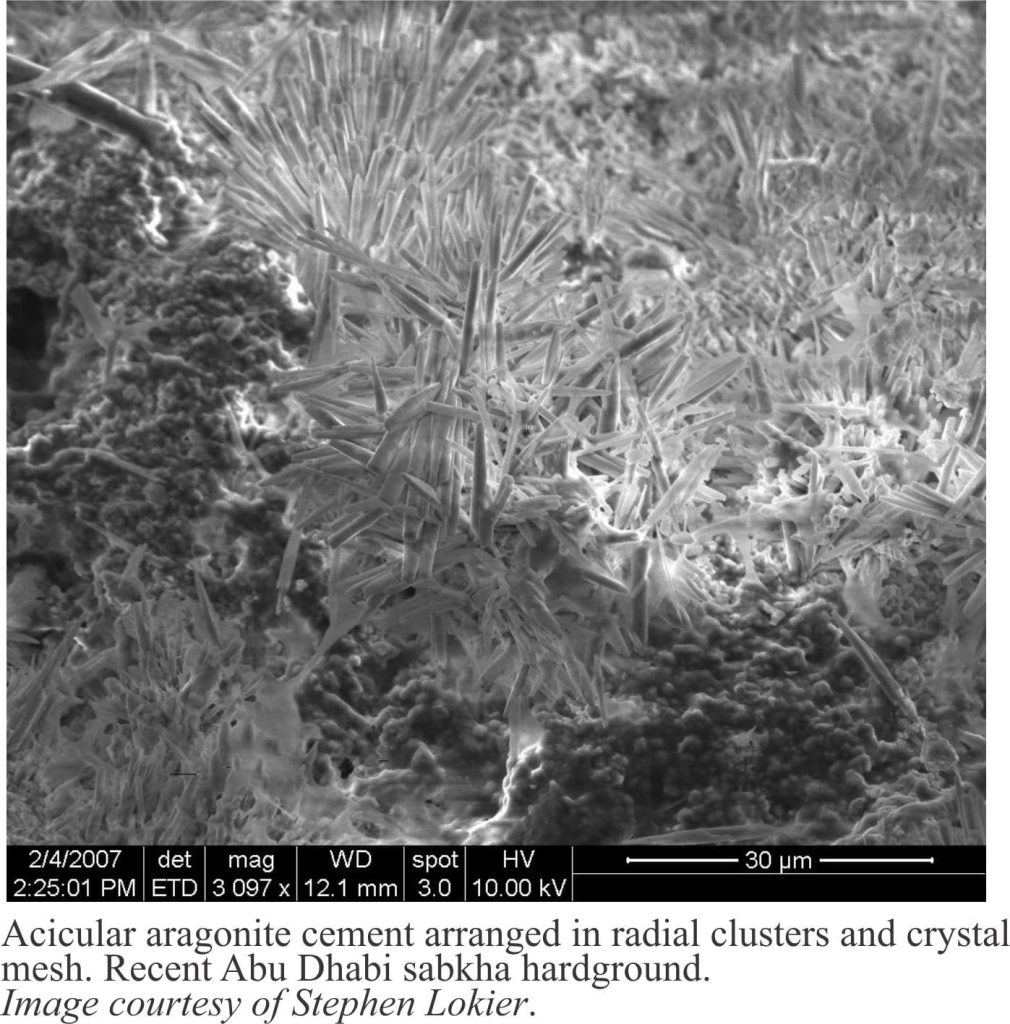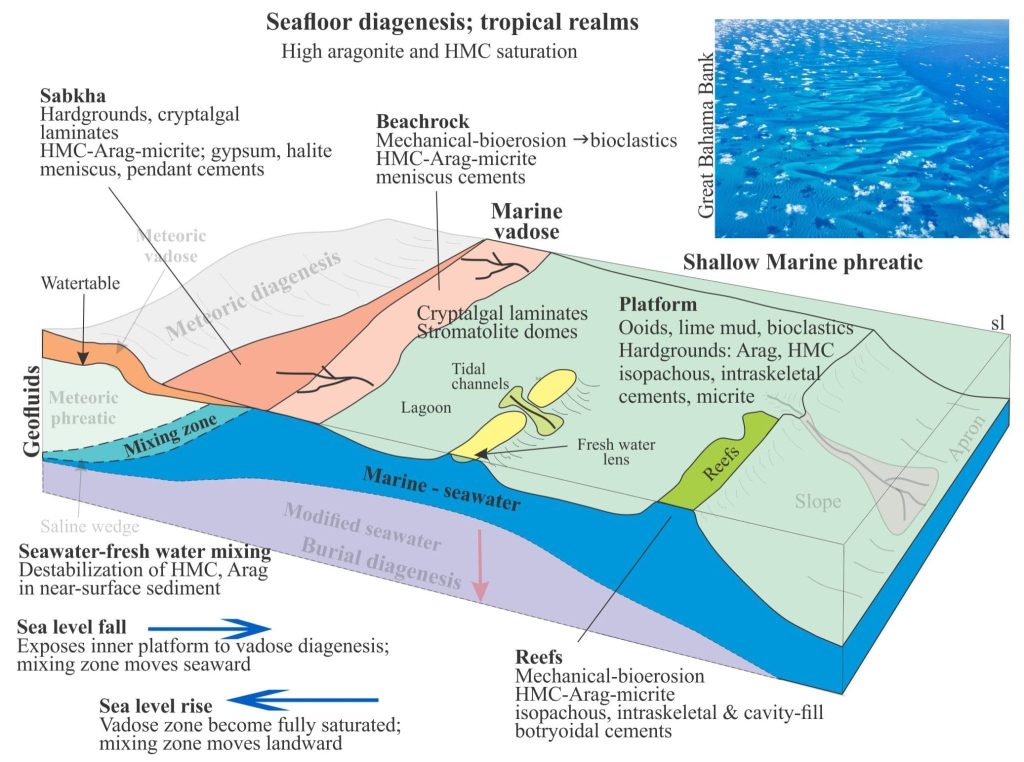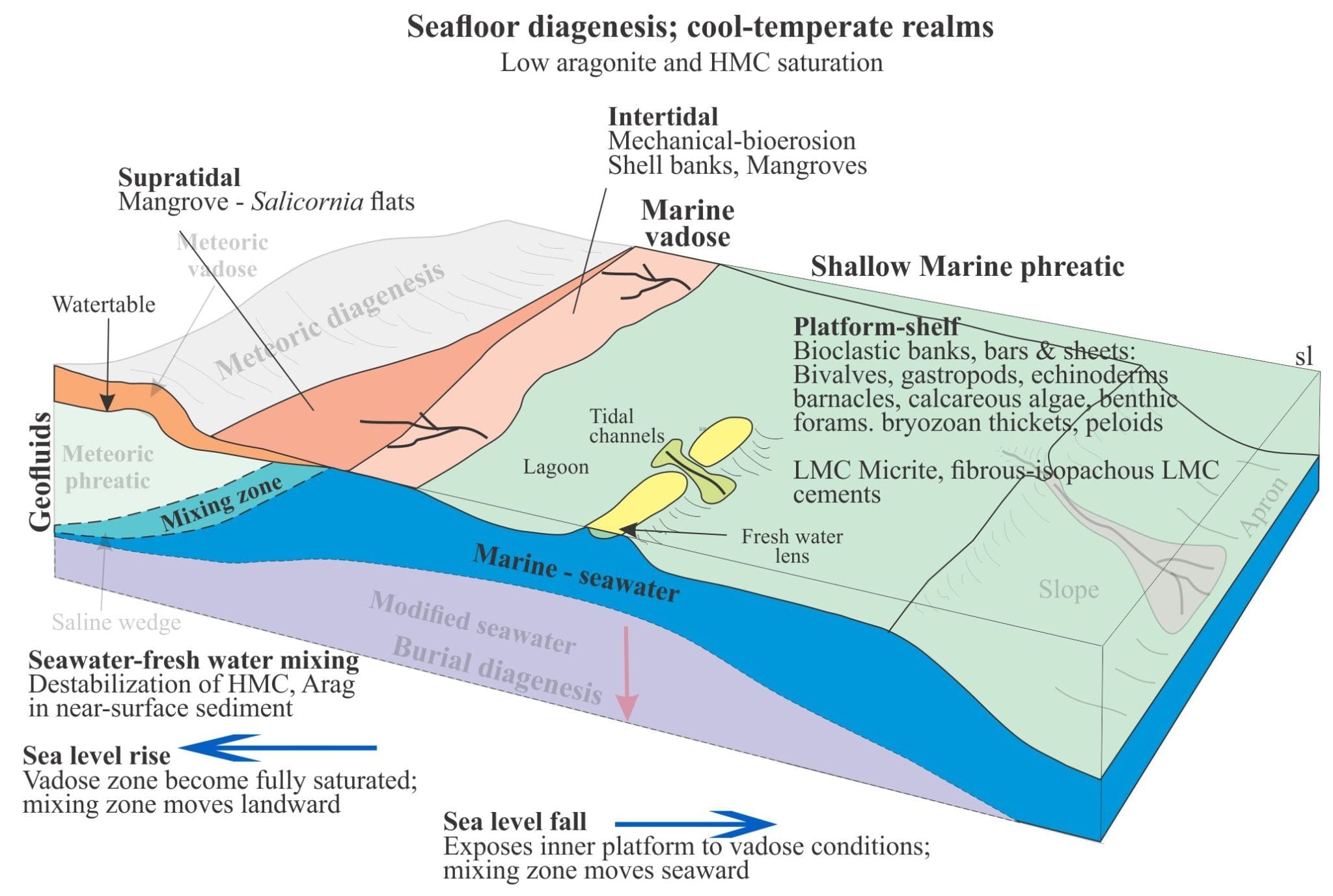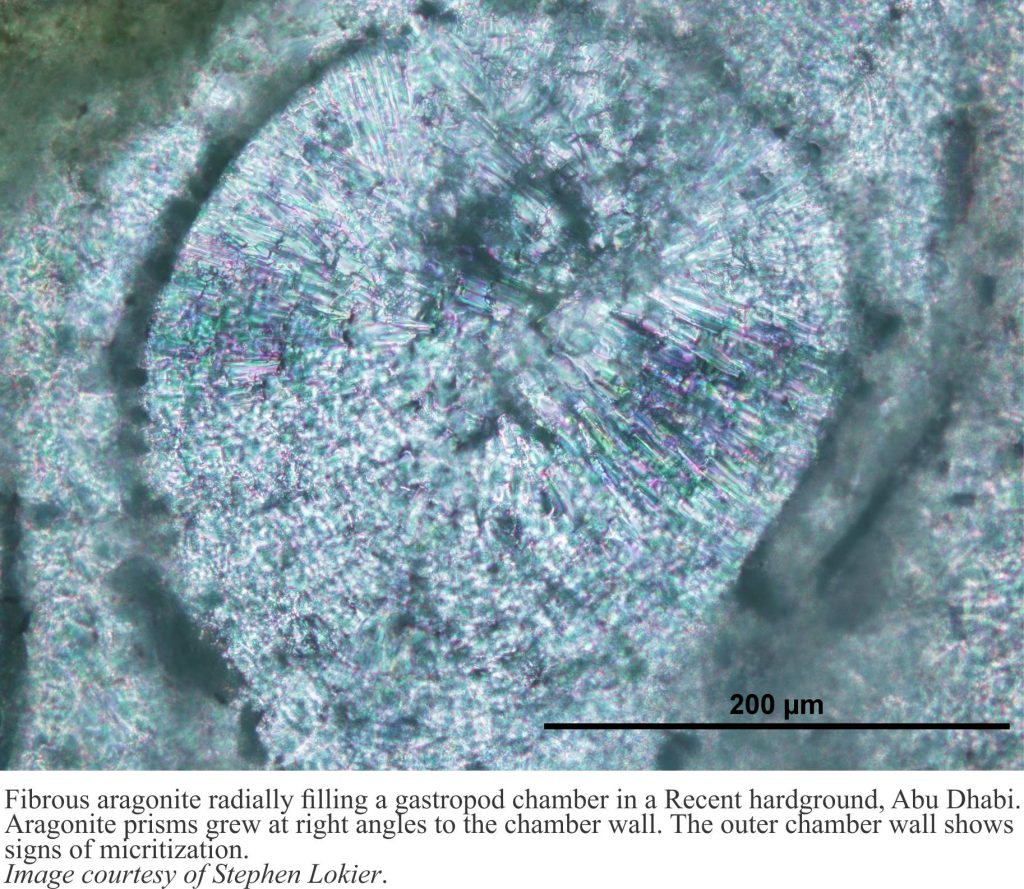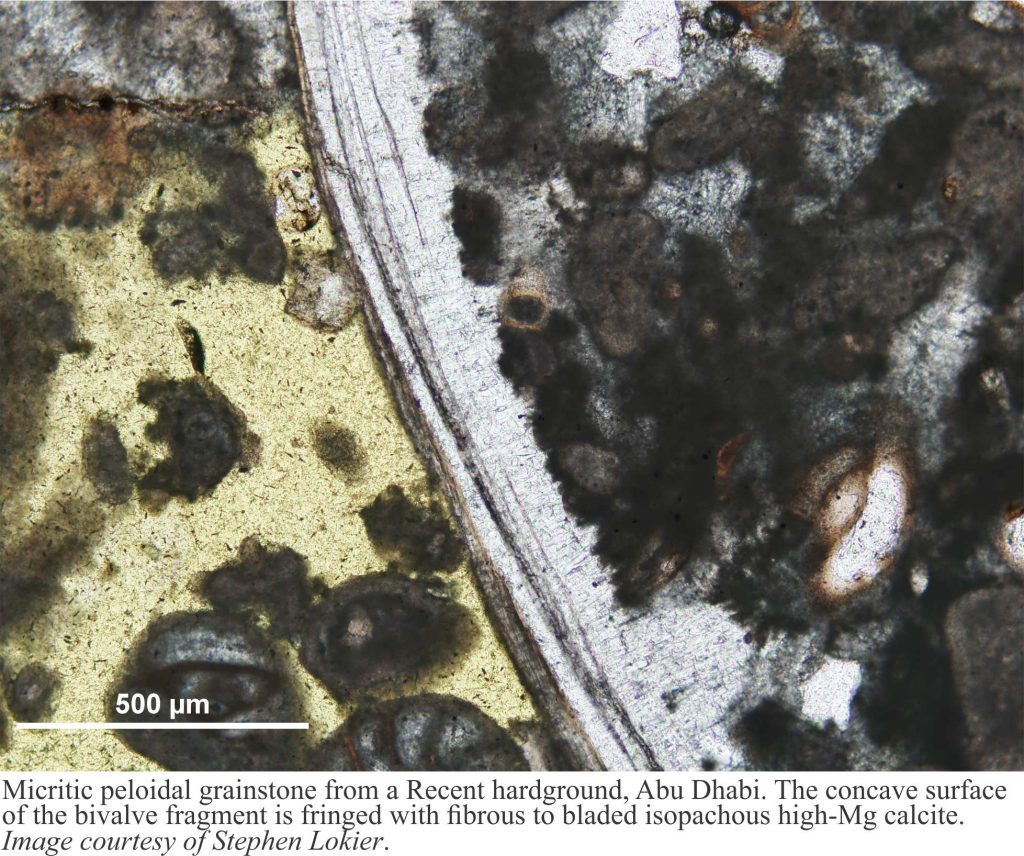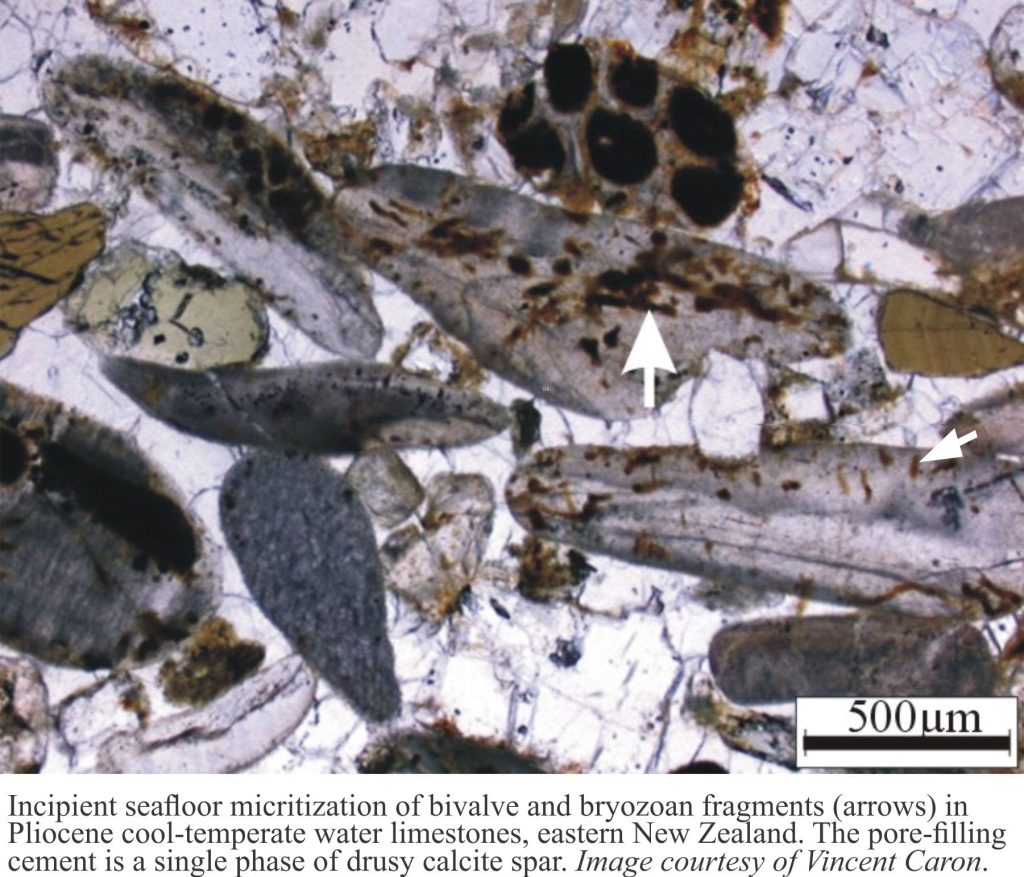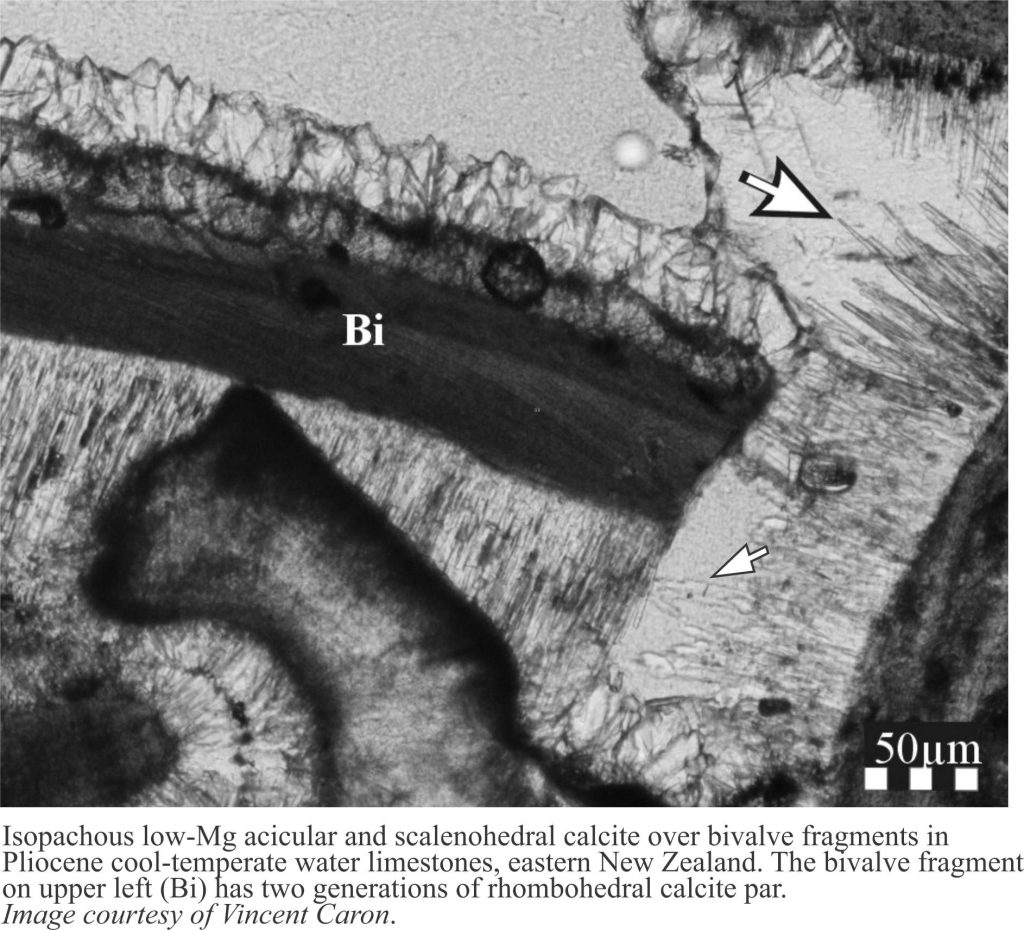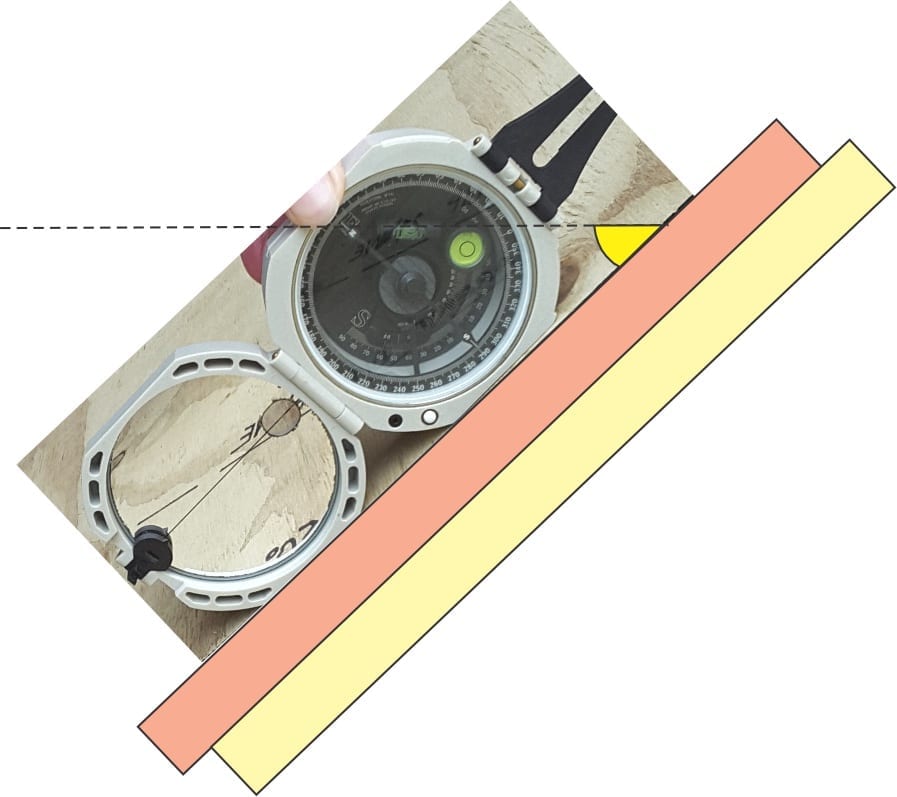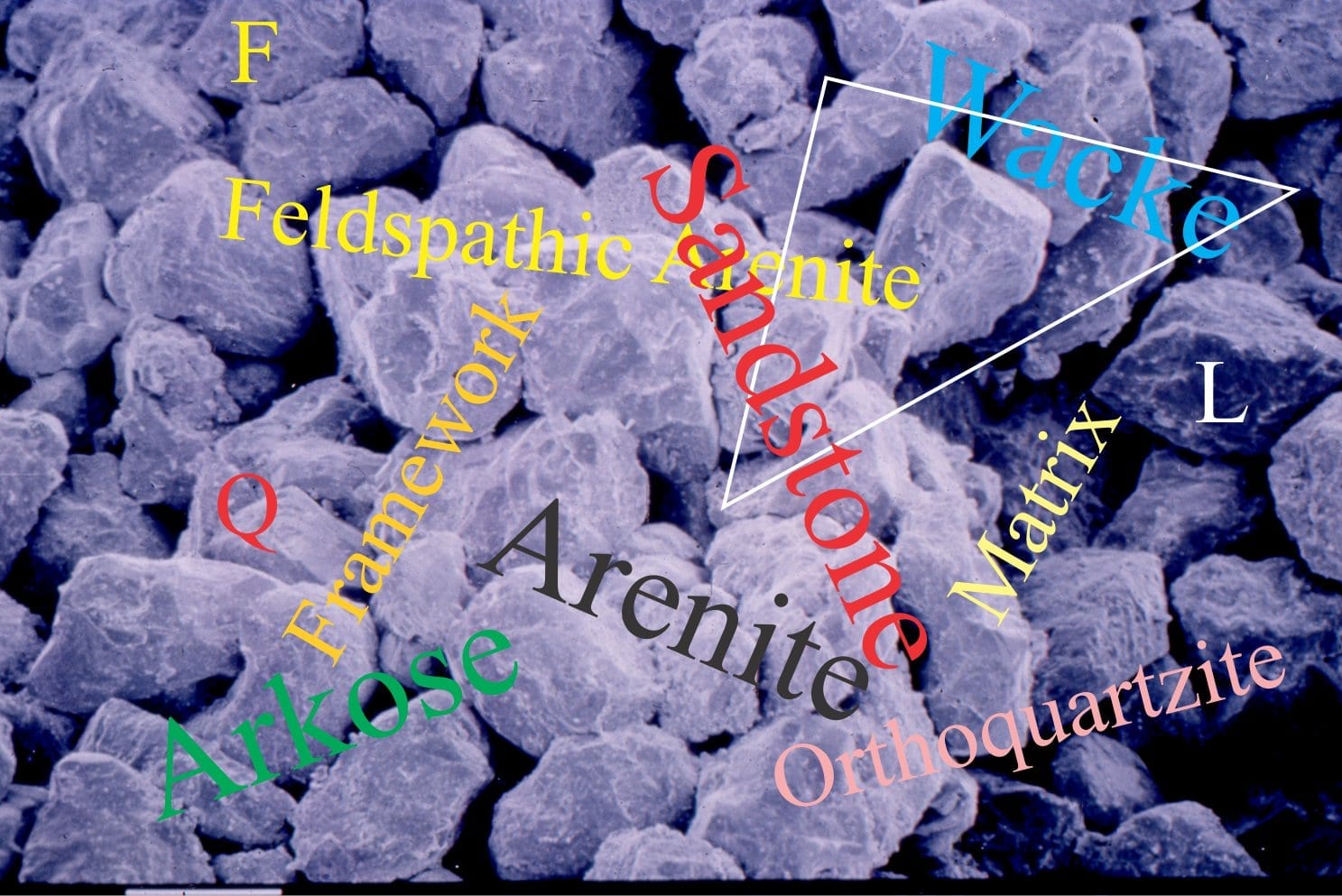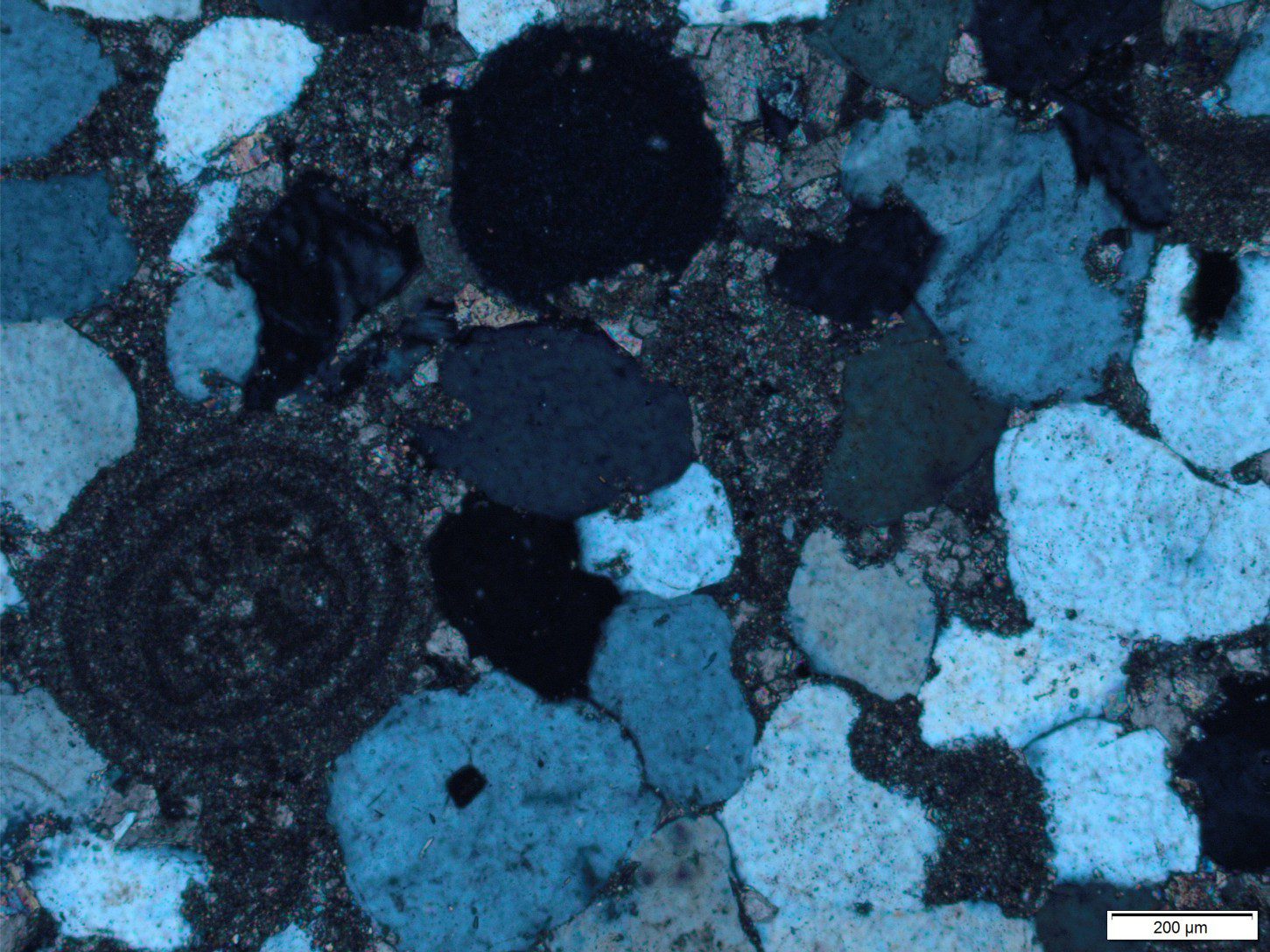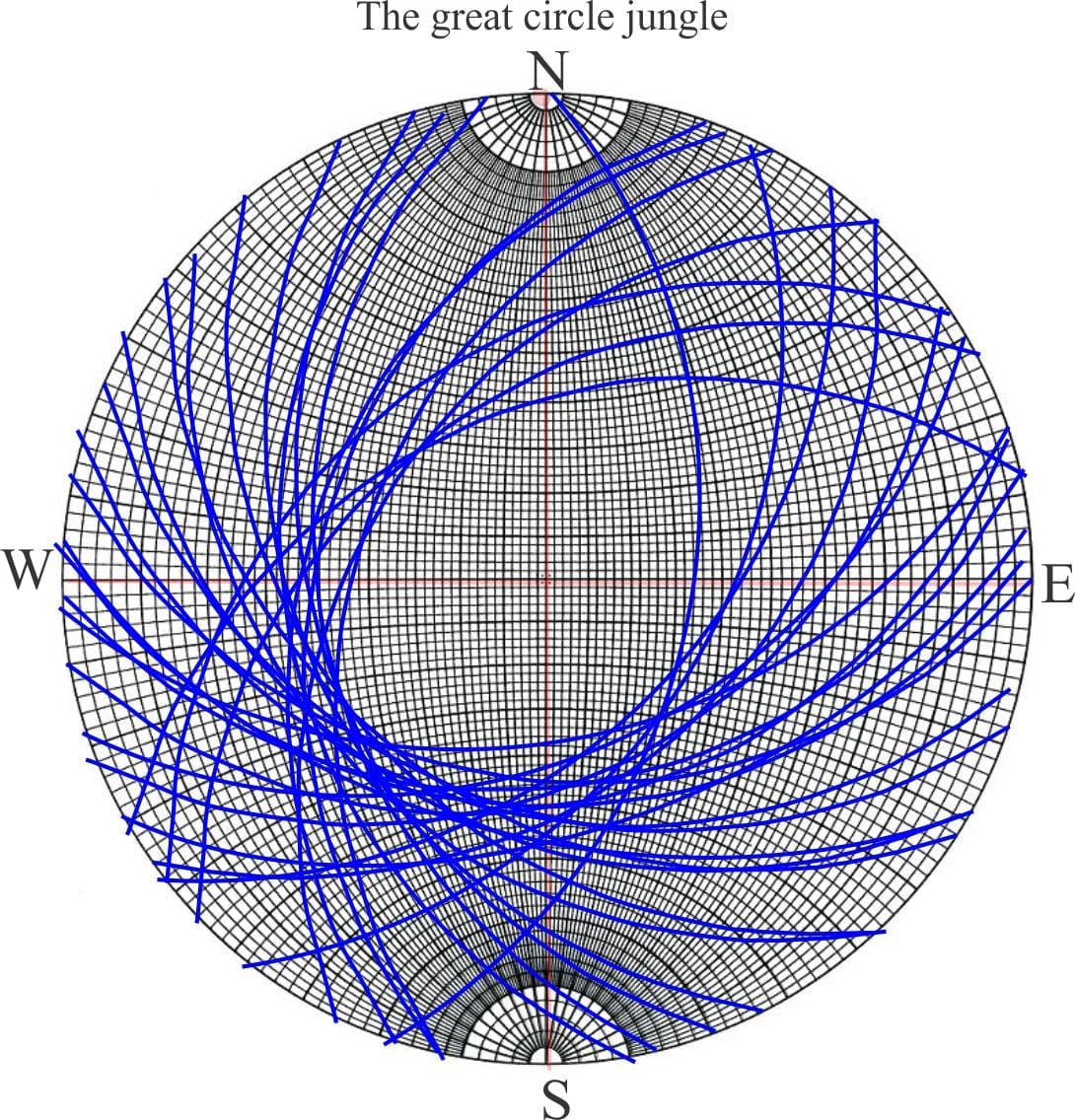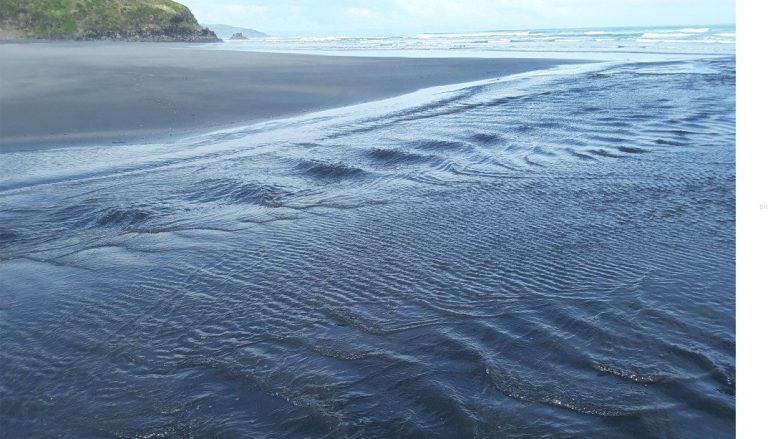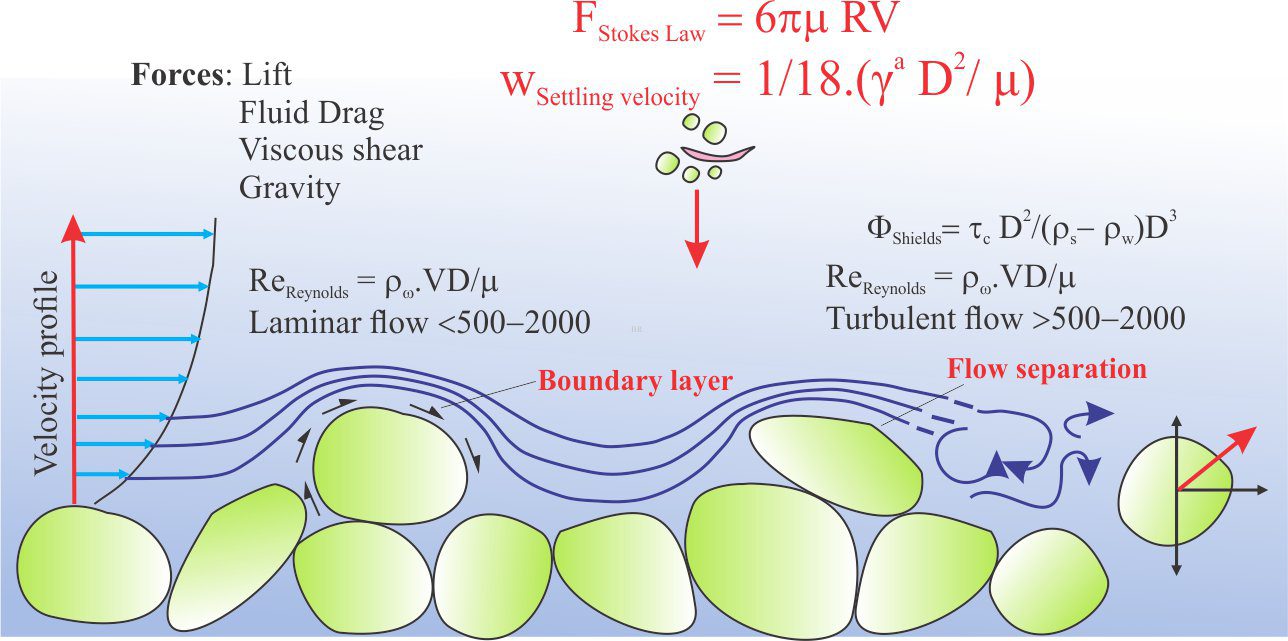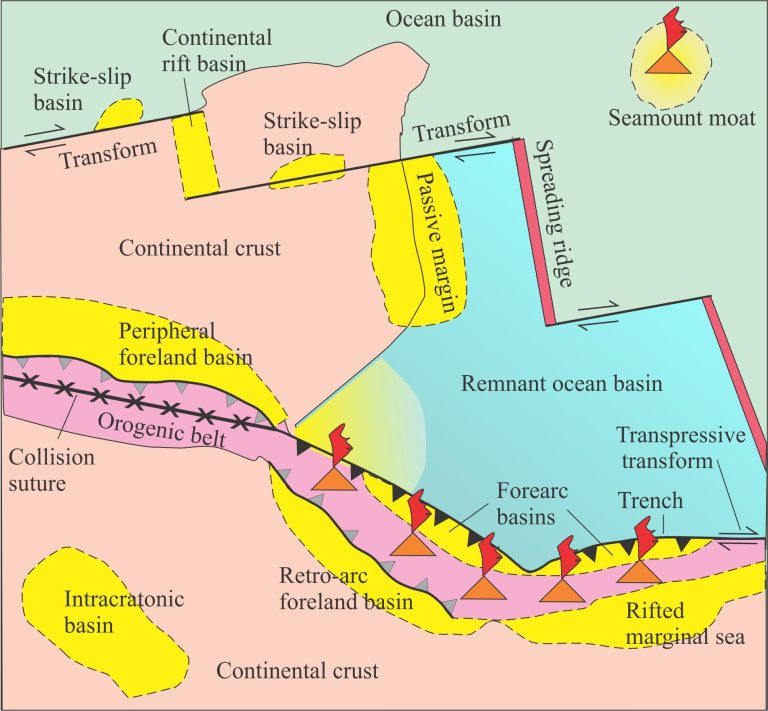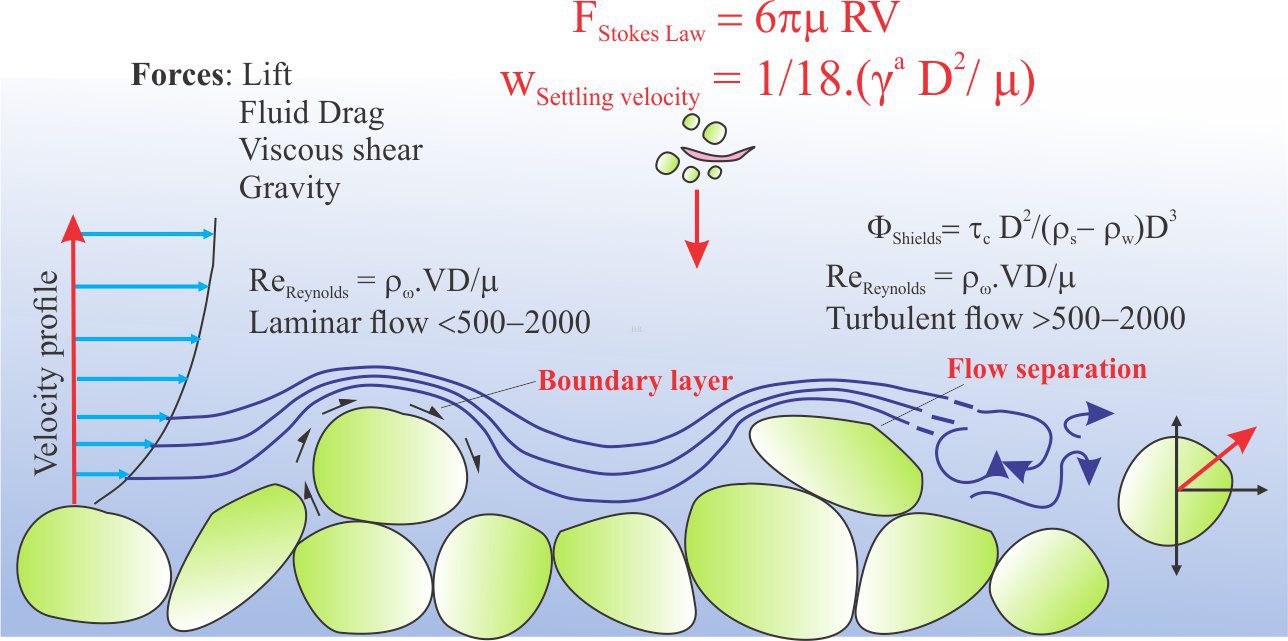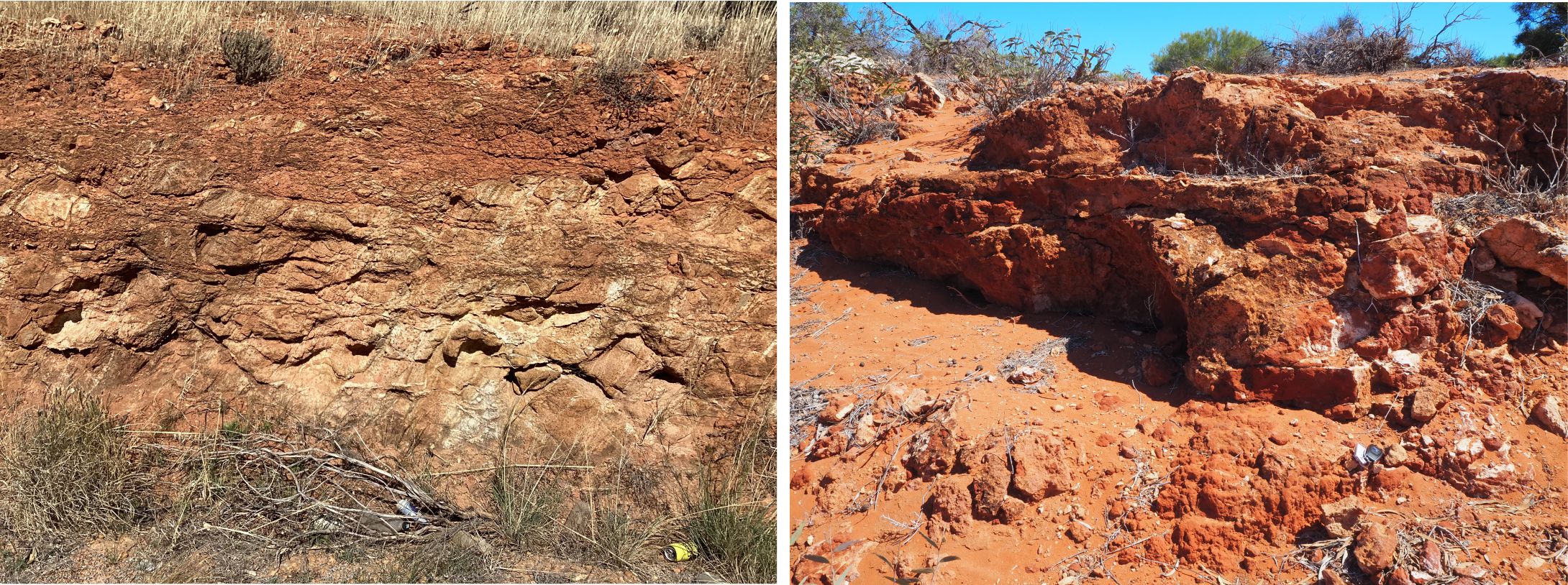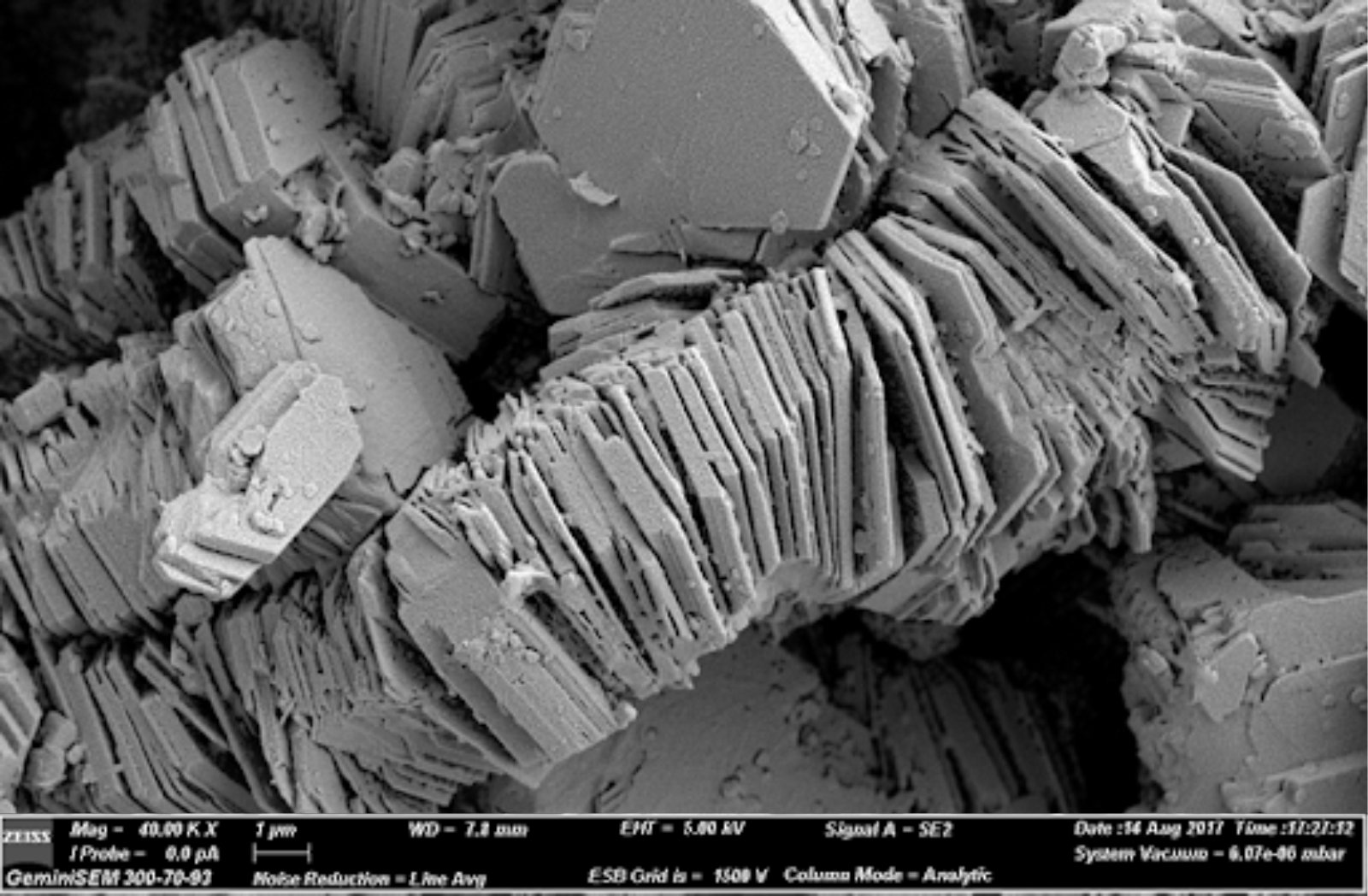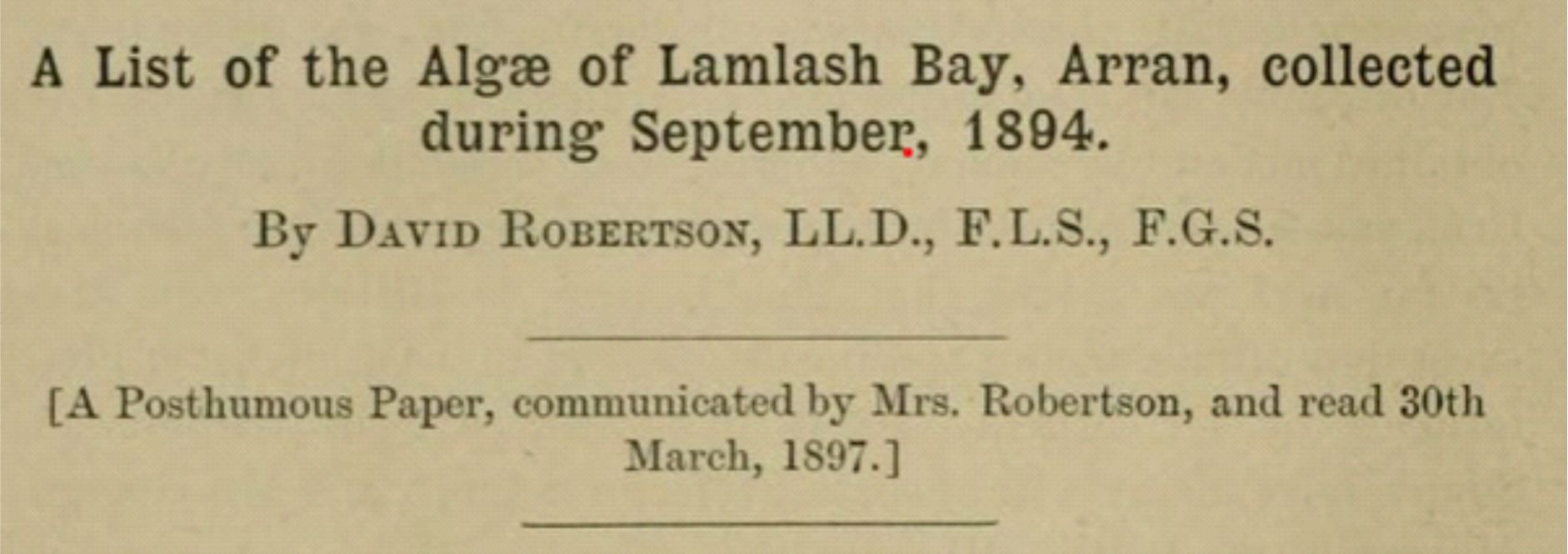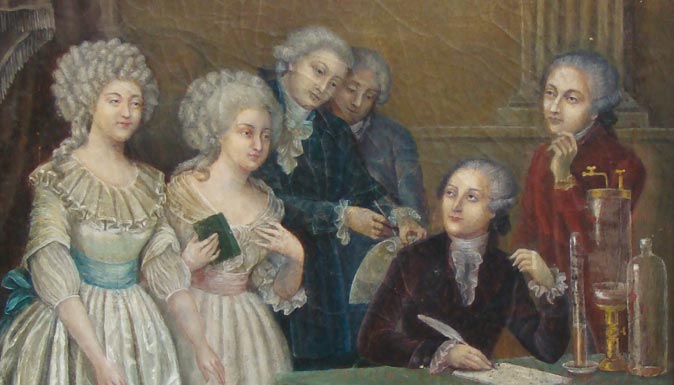Diagenesis on the sea floor – This is part of the How To…series on carbonate rocks
Seafloor carbonate diagenesis encompasses the vadose intertidal-supratidal, the phreatic shallow subtidal lagoon and platform, deeper water slopes below the photic zone, to bathyal ocean floors. This post deals with the shallow end of the action.
Physical and chemical changes to carbonate sediment begin almost immediately; shells are bored by sponges and fungi, reef corals are grazed by sea urchins (what a lovely Dickensian expression), aragonite and calcite precipitate, skeletal debris dissolves. Biological processes go hand in hand with the abiotic. I like James and Choquette’s description of this important beginning to diagenesis – (paraphrased) loose sand that becomes cemented as a hardground changes the living conditions for a myriad critters and plants. Thus, the formation of beachrock or subtidal hardgrounds displaces a bunch of gastropods that prefer to live on soft sand.
Diagenesis at the seafloor involves fluids that are the same or similar composition to surface waters: unmodified seawater beneath open platforms, brackish fluids in seawater-fresh groundwater mixing zones, and hypersaline fluids in supratidal and sabkha environments. Fluid drive at the surface and shallow subsurface is provided by:
- wind and waves,
- tidal pumping where pore pressures (and CO2 partial pressures) in the shallow sediments increase and decrease with rising and falling tides,
- gravity-driven topographic drive that produces zones of mixing between land-derived fresh water and seawater,
- and in hypersaline settings, reflux driven by intense evaporation.
Precipitation of aragonite and high-Mg calcite cements on the sea floor or in the first few centimetres beneath it, is common in tropical settings, less so in cooler waters. This, the earliest stage of carbonate diagenesis is promoted by low sedimentation rates, high levels of mineral supersaturation and rapid exchange of atmospheric CO2 with aerated seawater. Microorganisms like bacteria and photosynthesizing algae also contribute either as mediators or by direct precipitation. These organisms may also assist by enhancing the number of nucleation sites on growing crystal surfaces.
Cementation in this environment produces crusts, grapestones in the case of ooids (that themselves are the products of precipitation at the sea floor), beachrock in the intertidal zone and cavity-fill cements in rigid structures like reefs. Intraskeletal cements are some of the first to develop: fibrous aragonite and high-Mg calcite, and micrite precipitate in gastropod and foraminifera chambers and coral septa; micritization of pelloids is common. The distribution of these early cements is dependent on environmental conditions, shown schematically in two very generalized versions of tropical and cool-water settings.
Whether tropical or cool water, the marine vadose zone between supratidal and low tide is fascinating. Sediments from the surface down to the local watertable are intermittently or periodically wetted. Even minor adjustments to sea level can shift the position of the freshwater – sea water mixing zone and the demarcation between vadose and marine phreatic conditions.
Some of the first formed cements in arid supratidal-sabkha settings include intraparticle (skeletal, pelloidal) fibrous and microcrystalline aragonite and high-Mg calcite. These cements extend to crusts and hardgrounds that also involve precipitation of evaporites and disordered dolomite. Crystal expansion during precipitation of gypsum and halite can disrupt the hardgrounds – the familiar teepee structures – creating additional pore space for early cementation. In more humid conditions the latter two phases are rare. These cements are also responsible for early mineralization of algal sheaths and filaments in cryptalgal laminates.
Marine vadose cementation in cool water realms is rare, although bioerosion and micritization may be important early diagenetic signals.
Beachrock is a feature of sandy, tropical coasts but much less common bordering cooler seas. From a geological perspective, beachrock develops in a geological instant, with lithification taking months to years; it is quite common to find Second World War and other modern relics in lithified Pacific island beach sands. More is said about beachrock in a separate post. Geologically Recent hardgrounds beneath Abu Dhabi sabkhas also demonstrate rapid precipitation of fibrous aragonite, high-Mg calcite and dolomite, on and within bioclastic debris (see a recent open access paper by Andreas Paul and Stephen Lokier).
The fully phreatic conditions on shallow, tropical subtidal platforms, lagoons, shelves and reefs also promote early cementation. Again, some of the earliest micrite cements are intraparticle. It seems that active cementation (particularly isopachous aragonite and high-Mg calcite) is more common beneath open seas where waves constantly interact with the sea floor (i.e. above storm wave base), whereas micritization is more common in lower energy lagoons. Formation of crusts, if extensive, will change the local benthic activity.
Subtidal sea floor cementation beneath cooler seas is far less common, and where it has occurred is mostly low-Mg calcite. Some excellent examples in the Pliocene Te Aute Formation (eastern New Zealand) show fibrous, isopachous calcite that precipitated atop micrite fringes.
Early cementation is promoted in the open frameworks of tropical reefs where seawater flow is constantly pumped by waves. Fibrous or bladed aragonite and high-Mg calcite fringe the cavities or accumulate as botryoidal clusters. Intraskeletal cementation is common, particularly in coral septa.
Thin section Images generously contributed by Stephen Lokier, Vincent Caron and Charlie Kerans are indicate on each figure.
Links to other posts in this series:
Mineralogy of carbonates; skeletal grains
Mineralogy of carbonates; non-skeletal grains
Mineralogy of carbonates; lime mud
Mineralogy of carbonates; classification
Mineralogy of carbonates; carbonate factories
Mineralogy of carbonates; basic geochemistry
Mineralogy of carbonates; cements
Mineralogy of carbonates; diagenetic settings
Mineralogy of carbonates; Beachrock
Mineralogy of carbonates; deep sea diagenesis
Mineralogy of carbonates; meteoric hydrogeology
Mineralogy of carbonates; Burial diagenesis
Mineralogy of carbonates; Sabkhas
Texts you should look at:
Robin G.C. Bathurst, 1976. Carbonate Sediments and their Diagenesis. Elsevier, Developments in Sedimentology, 12. 658p. An example of the longevity and utility of one of the best on this topic. Now also as an ebook.
Noel James and Phillip Choquette.1984. Diagenesis 5. Limestones; Introduction and subsequent articles on sea floor, meteoric and burial diagenesis. The Canada Geoscience Series on Carbonate Diagenesis is available from the CGS archive.
Noel James and Brian Jones. 2015. The origin of carbonate sedimentary rocks. American Geophysical Union, Wiley works, 464p.An excellent recent update.
Peter Scholle and Dana Ulmer-Scholle, 2003. A colour guide to the petrography of carbonate rocks: grains, textures, porosity, diagenesis. AAPG Memoir 77. Loaded with images.
Erik Flugel. 2010. Microfacies of carbonate rocks: Analysis, interpretation and application. Springer. The ebook is cheaper
Reijmer, J.J.G. 2016. Carbonate Factories. In: Encyclopedia of Marine Geosciences, Springer
